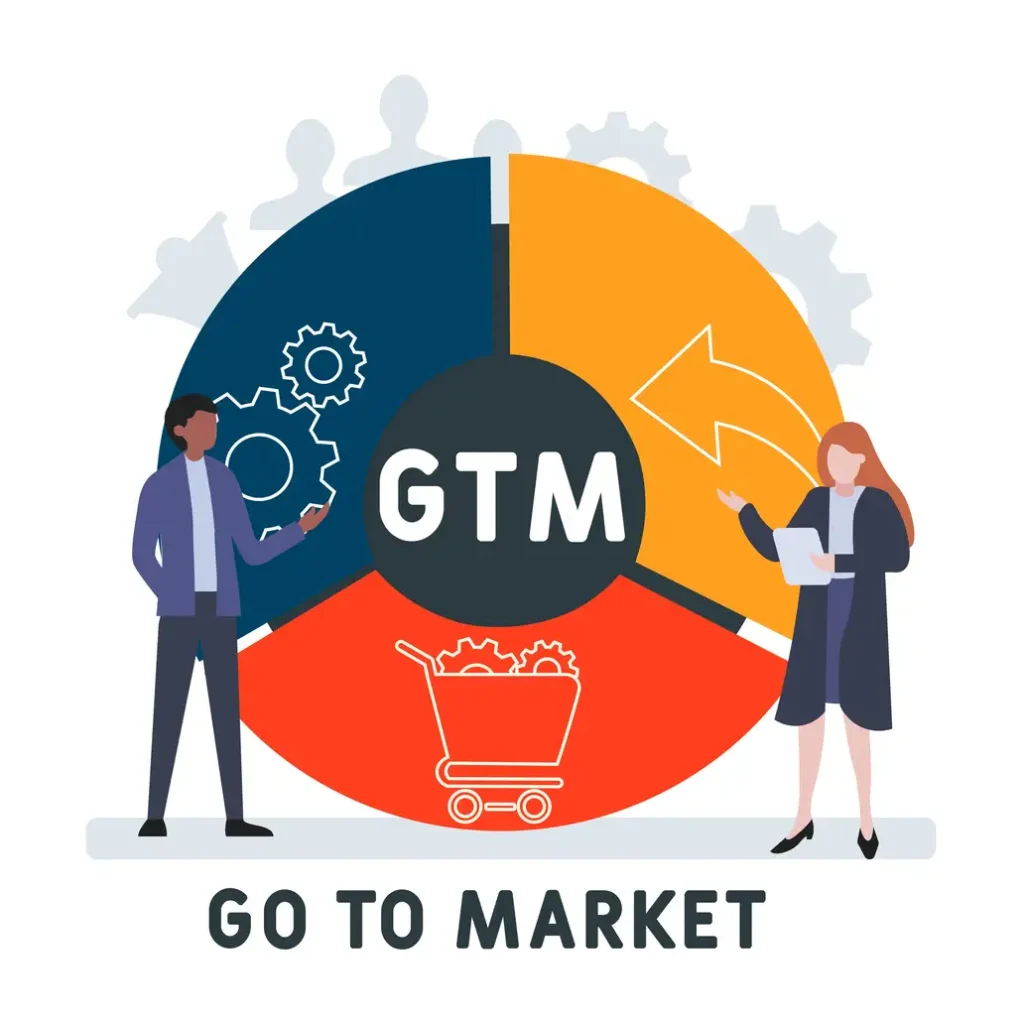
GTM strategy framework showing go to market strategy examples diagram
Launching a new product takes more than a great idea. It requires timing, clarity, and a whole lot of coordination. That’s where a go-to-market strategy makes all the difference. Instead of rushing to launch and hoping for traction, you get a clear, confident path forward.
A solid GTM strategy framework helps reduce time-to-market, ensures your team avoids missteps, and boosts ROI from day one. It aligns product, marketing, sales, and leadership around shared goals. In this guide, you’ll learn what a go-to-market strategy is, how to build a winning GTM framework, examples from brands who’ve nailed it, and practical tools to support your rollout. Ready to get strategic about going to market? Let’s begin!
What Is a Go-to-Market Strategy and Why It Matters
A go-to-market strategy is your launch blueprint. It maps out your target audience, messaging, sales approach, marketing channels, pricing strategy, and more. While your overall business strategy drives your company vision, the go-to-market strategy zeros in on getting one product to market successfully.
It ensures your team knows who you’re targeting, why they should care, and how to reach them. Whether you’re launching a SaaS platform or a physical product, a great go-to-market strategy framework makes your move feel intentional, not reactive.
Core Components of a Go-to-Market Strategy Framework
Target Audience and Buyer Personas
Start by identifying who needs your product most. Create detailed buyer personas based on research, not guesswork. This helps you build offers that truly resonate.
Value Proposition and Messaging
What makes your product different? Your unique value proposition should be front and center in your marketing. Clear, benefit-focused messaging builds trust fast.
Distribution and Sales Channels
Decide where and how you’ll sell. Will you use direct sales, online marketplaces, or channel partners? Channel choice plays a big role in marketing sales alignment.
Pricing Strategy
Set a pricing model that matches customer expectations and business goals. Will you use value-based pricing, freemium offers, or a subscription model?
Phased GTM Rollout
Break your launch into stages. A phased GTM rollout lets you test, iterate, and scale in a smart way. It also helps build buzz before going wide.
GTM Strategy Examples That Work
Need an example of a go-to market strategy that hits the mark? Here are a few standouts:
- Zoom focused on ease of use and a freemium model to drive adoption before scaling to enterprise clients.
- Tesla launched with high-end models first to build prestige and fund future models.
- Dropbox used viral referral programs to grow its user base without massive ad spend.
Each brand used a go-to-market strategy example tied to its audience and business goals, and that’s key.
Tools to Support a GTM Strategy
You don’t have to build your strategy from scratch. Here are the tools that make execution smoother:
- CRM platforms for customer tracking
- Project management software for task coordination
- Analytics dashboards for measuring progress
- Brand audit tools to keep your messaging sharp
- Reputation monitoring tools for proactive brand and reputation management
These platforms make your go-to-market framework scalable and repeatable.
Common Pitfalls to Avoid During Launch
Even with a strong GTM strategy, things can go sideways. Watch out for:
- Skipping market research
- Misaligned sales and marketing teams
- Rushing the timeline
- Ignoring early customer feedback
- Launching without a proper brand audit
- Underestimating support needs post-launch
Launch Smarter Strategies with D2 Branding
You’ve worked hard on your product. Now it’s time to give it the spotlight it deserves. A smart GTM strategy helps you feel in control and prepared to scale with confidence- D2 Branding can help you build it!
We’ve supported local brands by building tailored go-to-market strategy consulting frameworks that deliver clarity, results, and momentum. Let our fractional CMO team be your trusted partner from strategy to execution.
